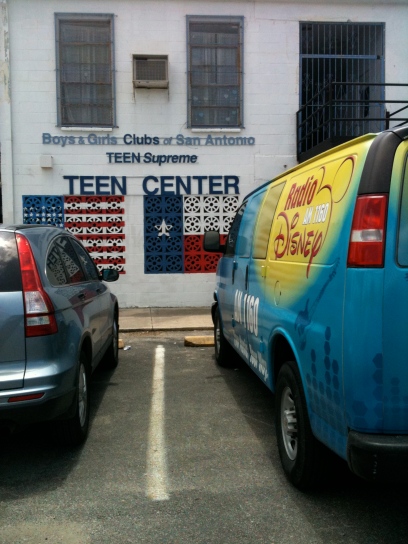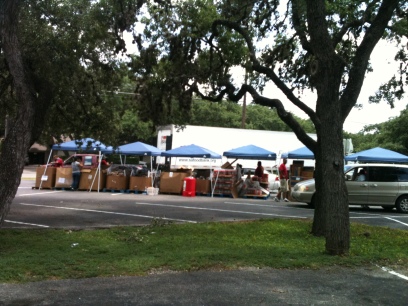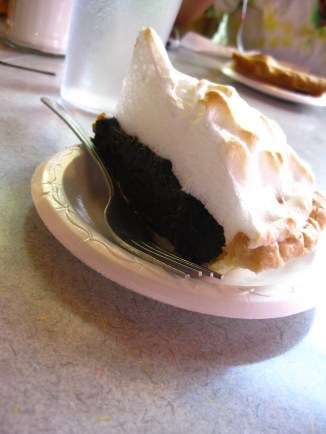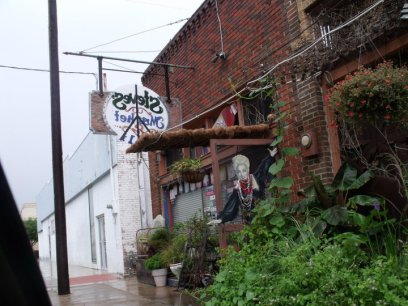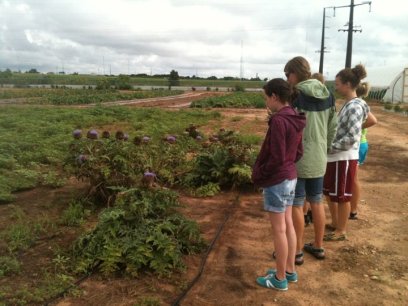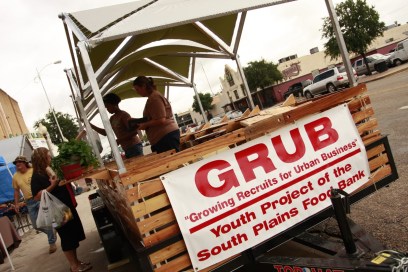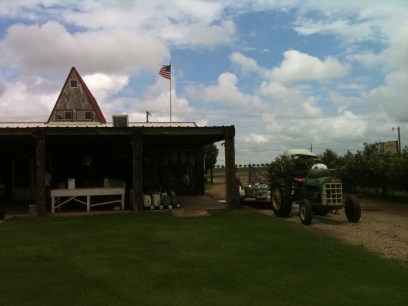World Hunger Relief, Inc.

World Hunger Relief, Inc.
This is the old World Hunger Relief, Inc. blog. There is still lots of good stuff here so take your time and look around before going to the new blog accessible from the homepage on our website. www.worldhungerrelief.org
Tuesday, August 24, 2010
School Gardening Video
Technology for the Poor Building at World Hunger Relief, Inc.


We have recently finished the building you helped us start last year. It has been named the Technology for the Poor Building at World Hunger Relief, Inc., in honor of our partnership with Job Ebenezer and his ministry, Technology for the Poor.
The picture below is of Jonathan Bruce, one of our AmeriCorps members, grinding flour on the dual purpose bicycle Job has designed. The building houses this bicycle as well as a food storage demonstration area that includes: a cool storage room, freezers, canning, dehydrating, fermenting and an evaporative cooler called a Zeer Pot. We also plan to add an observation beehive in the near future.
The building also has a four station hand washing sink/drinking fountain that has allowed us to get our school groups cleaned up and hydrated in very quick fashion. Off the back of the building is the Heart of Texas -Master Composter Learning Center which has demonstrations of composting appropriate for homes, schools and small businesses.
Thank you everyone who contributed to this project. We hope to partner with you again soon.
Especially First Methodist Tulsa , Dana and Betty Sark, Don and Elaine Stover, and Linda and Delbert
Monday, August 9, 2010
New piece on our Internship
http://www.news8austin.com/
Friday, August 6, 2010
Farmer Brad in Ft. Worth,
Special Speaker: Brad Stufflebeam
"Organic Farming in Texas"
Wednesday, August 4, 2010
Texas at the Table: Part Four.

Preservative Pickles, Cardboard Apples, and the Theology of Disposable Dishware
at the Table in San Antonio, TX
While surveying the sights in San Antonio, we – the lovely ladies of the Texas at the Table: Project Go Road Trip – experienced the full spectrum of emotion – from shock and awe, disillusionment and hope. We discovered new insights into everyday theology – through eating red delicious apples and washing mismatched dishes. San Antonio was the fourth stop on the Texas at the Table Road Trip to explore how people across Texas creatively address hunger in their communities – or more simply, exploring where food comes from, who gets it, and who doesn’t.
Day Ten: After basking in the sun for an afternoon and unwinding in a cabin in the hill country, we dove back into summer feeding frenzy in San Antonio. Our first stop was Baptist Temple Church to meet with Pastor Jorge Zayasbazan. Baptist Temple was one of the first churches in San Antonio to initiate a summer lunch program for neighborhood children. In their second summer, Baptist Temple now hosts summer camp five days a week, providing programming for kids all morning long and ending with a lunch. In San Antonio, the summer lunch program is sponsored by the San Antonio Food Bank to coordinate the food distributed to the various lunch sites across the city. Pastor Jorge led us through the kitchen to show us a bagged lunch prepared by the Food Bank – a hot dog wiener, pickle-in-a-pouch, fruit cocktail, and fruit cereal bar. If enough time and hands are available, the hot dogs will be heated up in the microwave before served to the children in a white bun. My fellow Road Trippers – already having their fill of hot dogs – were aghast at the nutritional deficiency of said meal. And yet such meals meet the US Department of Agriculture’s nutritional standards of a healthy meal.
From Baptist Temple, we jumped in the cars, stuffed some carrots, cucumbers and hummus in our mouths and headed towards the San Antonio Food Bank to meet with Paco Velez, Director of Services – to take a tour of the city programs with which the Food Bank partners. First stop, a neighborhood center summer program for teens. This program was co-sponsored with HEB and Radio Disney. When we walked through the doors, we were hit with the smell of sweaty adolescence, or should I say, teen spirit. Radio Disney led dancing-jazzercise wonderful-ness with the teens. The HEB mascot handed out apples. The overall focus of the program is health and fitness. I spoiled the good vibes by politely declining the offer of an apple, because personally, I think red delicious apples taste like cardboard – and out of all the hundreds varieties of apples, I have no idea why we as a culture have adapted the red delicious apple as the apple of choice. If I were a teacher and a student of mine handed me a red delicious apple, I would promptly compost it. Perhaps this is a bit harsh, but food grown for artificial appearances preserved to have a shelf-life of 6 months should not be considered edible. Chemicals are used to keep the food-product looking fresh, while the sugar content (ie flavor) begins to deteriorate the moment it is plucked from the branch. This is not food. And this is why our children do not eat their vegetables. Or red delicious apples. Or fruit infused-in-high-fructose-corn-syrup cocktail. And also a contributing factor to the increasing rate of adult-onset diabetes and obesity amongst our children. Excuse my rant.
After the youth center, Paco took us to a senior center distributing senior food boxes in addition to what the social worker side of me chooses to refer to as the diabetes line – donations from HEB of all the day-old pastries, cakes, cookies, breads. Don’t get me wrong – I truly appreciate attempts to salvage food from waste (and am an avid dumpster diver of groceries and used to rescue hundreds of $$$ worth of fresh produce from my local Trader Joe’s) – however, as a former case manager for low-income and homeless families, it pains me to see people who have lost their sight, toes, or whole legs to diabetes reaching for that free cake donated by HEB. Let them eat cake, indeed! If we want to adequately fix our broken health care system while attempting to end hunger in our communities, we must understand and emphasize the importance of good nutritious food. A shift must occur socially and culturally. Those of us from higher economic brackets who prefer fresh organic food – be it from HEB, Central Market or Whole Foods – musn’t reach for the can of creamed corn and bag of ramen noodles that we wouldn’t feed ourselves or our children when the next food drive for the church food pantry hits us in the face. If we have respect for our own bodies and own health – as well as that of our children – then as Christians (if we claim to believe in God and the words Jesus said to love our neighbors as ourselves) we must also respect the health and well-being of our brothers and sisters we serve at food pantries, on the street, at work, next door. Excuse my rant.
Next stop: one of the Food Bank’s drive-thru food box distribution sites. Typically the Food Bank requires that a parking lot can accommodate 500 cars in order to qualify as a site. The site is complete with canopies covering everything from potatoes to beverages to rice and more is hand-loaded by Food Bank employees into the trunks and backseats of those willing to sit idling in the parking lot. Qualifications: folks must have a child under 18, call ahead to the Food Bank to reserve a box, and be willing to take the time in the morning or afternoon to wait in line. Such a food distribution presupposes transportation and gas money.
Our last stop before heading back to the Food Bank was the infamous Haven for Hope, a multi-million dollar response to homelessness in San Angelo. As our friend Steven from Austin explained, Haven for Hope is the Walmart of the social service world: one stop shopping for the homelessness community, providing a multitude of programs and gated community setting – and slowing putting smaller homeless assistance programs out of business with the consolidation of funding and services focused on Haven for Hope. The Food Bank’s role at Haven for Hope is food, of course, as well as a Culinary Arts Training Program – allowing residents to participate in a job-readiness program. We benefited from some of the program’s red velvet cake.
Finally, the Food Bank operates a garden on the site of the main headquarters. I led the gals for a plant identification tour – testing their increased knowledge of various vegetables and herbs. Upon asking Paco about the Food Bank’s sourcing of fresh produce, he told me they work with one of the largest produce warehouses in the state of Texas – which donates millions of pounds of vegetables and fruit each year. The Food Bank also encourages community partners to start their own gardens, providing seeds and tools to help get their gardens started.
That evening we had a terrifying experience had an HEB-plus on the south side of the city. I would also like to comment that any and all of my rants are not against the San Antonio Food Bank specifically. The SAFB is one of the best food banks in the nation, distributing large amounts of food to those in their community who need that extra support. They do good work. However, I am continually frustrated when efforts to address hunger in the community are haphazardly bandaged through quick fixes of food-products devoid of nutritional value – while the plight of the family farmer is furthered by our societal reliance upon agri-business and corporate conglomeration of our food system. Seems like there should be a solution in there some where to connect the idea of growing food with the issue of ending hunger, while economically benefiting small growers and the local community at the same time . . . Excuse my rant.

Day Eleven: Friday morning our view of San Antonio – and the entire trip – shifted. Rather than continuing to see refined programs tailored to look good in funding pamphlets, we saw down and dirty service to community. We metwith Dee Sanchez, volunteer at the San Antonio Catholic Worker House – who, first things first, led us in a devotion centered on Matthew 25, integrating Jesus’ message into the work of the Catholic Worker house – feeding the hunger, providing shelter to the homeless, doing laundry, sharing conversation, sharing coffee, etc. The Catholic Worker Movement started many moons ago when a fiesty young woman – Dorothy Day – and simple agrarian-minded man – Peter Maurin – frustrated by the Church, decided to become the hands and feet of Christ through inner-city and agricultural hospitality. Today many Catholic Worker Houses are scattered across the country, continuing in the fiesty agrarian spirit of Dorothy and Peter. We Road Trippers truly felt that all who entered this old house were truly welcome. We spent the morning in the crowded kitchen of the house preparing lunch for whomever might show up. Potatoes were chopped, boiled and mashed. Donations of meat from a local rib joint were brought in. Herbs gathered from the garden. Vegetables chopped for salad. Peaches prepped for peach cobbler. Men wandered in and out, grabbing a hot cup of coffee on this 100-plus degree day. Folks came in to sign up for the laundry list. Some wanted to look through the clothing closet. Others volunteered to wash dishes. All was chaos – clanging of plates, swapping of stories – 50 at one time, sweaty bodies huddled over the chopping block. And yet through the chaos of it all – we loved it. Rather than receive food and donations from the San Antonio Food Bank or applying for government funding, the Catholic Worker House relies on donations from charitable folks in the community, praying God will provide day by day.

the San Antonio Catholic Worker House.
While preparing the meal, we heard stories of people on the streets. Some struggling to get into Haven for Hope and expressing their frustration with the lack of transparency of the program. Neither of the two claimed to do drugs, struggle with alcohol or have a history of abuse – which are key issues for getting a bed quickly at Haven for Hope. Rather they are the in-betweens, sleeping outside huddled against the building. They are allowed to take showers – but the stalls are only half-height and the toilets have no doors. Lunch is a cold sandwich in a brown bag. This couple has fallen through the cracks, like many other folks we meet – and this is where the Catholic Worker House opens its doors. For those who fall through the cracks. A hot meal is provided – with mashed potatoes, made from real potatoes, not off-brand flakes. And the dishes are real, not disposable. Another pet peeve of mine – disposable dishes. And not for the eco-elite reason of not being environmentally sustainable – but because of dignity. You would wash dishes for your family . . . If we serve people disposable food on disposable dishes, soon people begin to understand themselves as disposable people.

We served over 100 people for lunch that day – without air conditioning, without a dishwashing machine, without the Food Bank, without the government. As Dee said, “Love in Reality is a harsh and dreadful thing as compared to the Love in Dreams.” After cleaning up, we were plumb tuckered out and went back to our apartment at Baptist University of the Americas – and order a pizza from our local Pizza Hut . . .
Day Twelve: A more relaxed day. Drove to the Farmers Market at Pearl Brewery, where we bought some vegetables, sniffed some lavender, and browsed some books. Then we traipsed through Whole Foods – a first for the gals. So I gave them my Whole Foods plan of action – walk the perimeter and look for free food samples; walk the interior for free food samples; and walk the perimeter once more for free food samples. I also pointed out the Diva Cup – which I won’t get into here – but I had already given my 2-cents worth about being more sustainable during that time of the month. We ate lunch at Whole Foods before the gals scampered off to play sand volleyball in the scorching hot sun, with the two German Brethren volunteers we met at the Catholic worker house the day prior. Then we met up for dinner at Casa Rio and perused the River Walk, on the prowl for adventure. Finding none, we went home for a good night’s sleep before our drive to the Valley.

the San Antonio Riverwalk.
End Day Twelve. End Part Four.
Monday, August 2, 2010
Texas at the Table: Part Three.
From the Garden of Eden to Utopia
at the Table in San Angelo, TX
When in San Angelo, we – the lovely ladies of the Texas at the Table: Project Go Road Trip – saw the service of many churches and community folks coming together to meet the needs of their neighbors. San Angelo was the third stop on the Texas at the Table Road Trip to explore how people across Texas creatively address hunger in their communities – or more simply, exploring where food comes from, who gets it, and who doesn’t.
Day Six (the evening): Arrival in San Angelo. Jumping in head-first, our first stop on Sunday evening was Southland Baptist Church, home-base for much of the San Angelo’s work with the Texas Hunger Initiative. In fact, San Angelo was targeted for our road trip largely due to the good work of Carol Rigby Hiebert and Mary Herbert with the Texas Hunger Initiative in San Angelo. Tonight’s visit entailed clean-up crew for Southland’s VBS program, after a hearty meal of hot dogs and potato chips. I, Bethel, tried discreetly to sneak in some carrots from the Downtown Art Market in Lubbock to munch on for dinner – which satisfied my initial hunger until we settled into our new home for the next couple of days at the Baptist Memorial Retirement Home. Yes, we basked in the glorious accommodations of a retirement home while in San Angelo. God and his hospitality can be quite charming.
Day Seven: Monday morning we head to Rust Street Ministries and meet Cowboy Bob, a true West Texan cowboy. His real name is Bob Knox, also the director of Rust Street Ministries. Cowboy Bob tells us that RSM is a social service agency run out of a converted warehouse, distributing food (including fresh produce from the Garden of Eden), clothing, furniture and good cheer to all who come through the doors. First things first, our time starts with a devotion and sharing of fresh peaches, brought in by a neighbor. Next, a tour and then to work. A few of the gals stayed up front meeting with folks who came in for assistance, while the rest of us sorted clothing in the free store collection area. We were also able to scour the racks for some farm-work clothes while in McAllen – which inevitably led to much plaid and pearl-snaps as well as tattered jeans.
Around lunchtime, we headed to historic Fort Concho for Kids Eat, a summer feeding site in San Angelo. In San Angelo, the summer lunch program is coordinated by churches in the community, not through the school district or a food bank. Volunteers from various churches join together to make sure food is freely available to all in the community – especially kids – who need it. Cowboy Bob emphasizes the necessity of an ecumenical approach towards serving community – no church can be the body of Christ alone. Rather than helping service lunch, we are free to greet and eat with kids and their families. Much to the chagrin of the Road Trippers, lunch consisted of a hot dog and beans. Two consecutive days of hot dog meals conjured up images from Food, Inc., and our time at the Farm in Waco – and more questions about the state of our food system.
After lunch, we visited the Garden of Eden, a community garden coordinated by Cowboy Bob. In its first season, the Garden of Eden was established by a plea to a local church from Cowboy Bob to start a garden – and $15,000 was raised to sow and reap. Of all the okra and melons and more grown, 50% of the produce is donated to the Rust Street Ministries to distribute to community folks. A number of folks from the neighboring low-income senior housing units help provide a good amount of labor to keep the garden growing even in the midst of the West Texas dry heat. Additional support is provided by area Master Gardeners on Monday nights, when the gardeners gather together.
Day Eight: Another early morning. Local wisdom informed us that the Concho Valley Farmers Market sells out fast – so we had to the market opening at 7am to find fresh produce for our meal later that evening. Carol Hiebert guides us through the market, where we acquire fresh figs, peaches, red onions, sweet corn, elephant garlic, beets, bell peppers, and summer squash. I made a side purchase of amaranth seed from a lovely lady saving and selling seeds from her own garden.
From the Farmers Market we made our way to serve at the Daily Bread Soup Kitchen at Wesley United Methodist Church. Little did we know that we were to be the sole staff preparing the meal this noonday’s lunch. Starting with leftovers, we reheated enchiladas, greens, and rolls, then set to the task of making salad, spaghetti, and sweet tea. Daily Bread also has a relationship with the local Olive Garden, which donates extra soup. Today’s soup du jour: minestrone. No one is refused food. Seconds are freely given. Under the tutelage of hard workin’, tough lovin’ Pam, we managed to feed all who walked through the door, while pausing for a devotion and hymn-sing led by a neighbor in the midst of the lunch-feedin’ fury. Before leaving, a donation of fresh summer squash arrived from Rust Street Ministries, and we began to prep for tomorrow’s meal.
As a brief interlude, we went back to Fort Concho to meet with Cowboy Bob for a tour – and some down-home cookin’. Dutch oven peach cobbler, made in under the sweltering heat of the West Texas sun. (Interesting fact: many of the African-Americans in San Angelo are descendents of Buffalo Soldiers who defended Fort Concho).
Mildly exhausted, we traveled back to the retirement home to meet with fellow residents (of the young variety), Sarah and Jeremy Boucher – former Go Now missionaries now working with Kathy Waller and her husband, Terry, who started the organization Water for All. Sarah, Jeremy and Kathy shared their stories – travels and travails – of doing the work of the Lord in many places around the world – now for Water for All, which hand-digs and installs wells for increasing access to water in small communities. When they are not in the mission field, their home-base is San Angelo, where they attempt to live simply in order to avoid debt and other pitfalls that would chain them down to comfortable American lifestyles. Instead, they hope to be free to the possibilities to serve whenever and wherever they feel God calling.
Our final event for the day was hosted in the home of Tommy and Carol Rigby-Hiebert, gracious hosts of our time in San Angelo and members of Southland Baptist Church. The gals gathered and crafted our meal from the local fixins we picked up from the farmers market that morning, supplemented by local Mikulik sausage. Along with an education of what real food looks and tastes like, the gals were increasing in their capacity to prepare a wonderfully delicious dinner: corn on the cob, beet and beet green salad tossed in peanut sauce, onion-pepper-squash sautee, local sausage, and fresh fruit dessert of cantaloupe and yellow watermelon.
Day Nine: A good nights rest, and then we packed up for our official day-off: a trip to the hill country en route to San Antonio. We stopped for lunch in Utopia, TX, at the Lost Maples Cafe where we enjoyed slices of home-baked pies (chocolate, cherry and buttermilk), before an afternoon floating down the Frio River in Concan and an evening in a cabin at Neal’s Lodges.
End Day Nine. End Part Three.
Thursday, July 29, 2010
Texas at the Table: Part Two.
the Birds, the Bees and the Apple Trees
at the Table in Lubbock, TX
Having an initial crash course in Waco about the complexity of our food system, we – the lovely ladies of the Texas at the Table: Project Go Road Trip – made a bee-line for Lubbock to learn about (food) banks, bees, and Baptists. Lubbock was the second stop on the Texas at the Table Road Trip to explore how people across Texas creatively address hunger in their communities – or more simply, exploring where food comes from, who gets it, and who doesn’t.
Day Three: Beginning our trek from the World Hunger Relief Farm in Waco, TX, we head to our second destination on the Texas at the Table Road Trip – Lubbock – and the “road” part of our trip commences. Happily loaded into our Ford Fusions, we start our journey for lunch in Brownwood, TX – home of Howard Payne University, college of one of our fine young ladies, as well as Steve’s Market and Deli. Steve’s is an unusual little nook for small town Texas – more akin to Austin eateries – and we happily welcome Dr. Bronner‘s soap and vegetarian fare wherever we go. Or at least I do – the gals were probably just weirded out. But here at Steve’s we also meet a wonderful woman who works with Keep Brownwood Beautiful and oversees the Brownwood Community Garden. The garden is funded through economic stimulus money, complete with in-ground irrigation and rainwater catchment, and sits on the back property of Salvation Army.
After lunch, we take to the road once again to arrive in Lubbock and meet our hostesses – Vangela and Tish and the wee little Connor. Over dinner, we co-mingle with folks from the South Plains Food Bank – where Vangela works. Then one final stop before heading home to Vanela’s – the library. The library is a notorious sleeping spot for many of the homeless in Lubbock. We drop off extra food from our dinner to the men sleeping under the overhang. I met a recovering hippie named Woodstock who sleeps at the library when he can’t find a ride home. We part ways as it begins to rain.
Day Four: Another bright and early morning. Heading to Kitchen of Hope, a project of the South Plains Food Bank, where many of the meals are prepared for the various Kid’s Cafe sites – an after-school snack and meal program for low-income kids sponsored through Feeding America, the national network of food banks. Kid’s Cafe in Lubbock also sponsors the summer lunch program. Next, we visit the Church of Jesus Christ of Latter Day Saints in Lubbock, as they are hosting a youth summer camp for LDS teenagers in the area. We watch a film about the commitment to service in the church in response to the Gospel. Then Vangela shares her story, being a single-parent of a special needs child, losing her job, and needing the support of the Food Bank in tough times. Now she is able to give back. And so can these kids. They are spending their morning going door-to-door to collect canned goods for the Food Bank. Originally the kids were going to volunteer at the Food Bank, but due to a shortage, there isn’t enough food for volunteers to organize.
From the LDS church we head to the GRUB Farm, another project of the South Plains Food Bank, where we did some flood-damage control, after the recent hurricane rains. GRUB stands for Growing Recruits in Urban Business – a youth entrepreneurial agriculture program to train young folks how to grow fresh fruit and vegetables – 50% of which is distributed through the Food Bank, while the remainder is sold through a CSA. Local students who participate in the GRUB program also sell produce at local farmers markets. After the GRUB Farm had been in operation for a few years, a survey was conducted to assess whether the program was benefiting the lives of the youth who participated. Much to the amazement of those in charge, the youth knew how to grow vegetables but had no idea how to eat them. Thus started another important component of the GRUB program – cooking lessons as well as other value-added programs. The kids also sell GRUB Scrub, loofah soap that they have grown and made themselves. The GRUB Farm receives agricultural and technical support from Texas Tech – professors and students conduct experiments with season extension and vegetable varieties, which are then integrated into the GRUB program. Because so many youth work at the Farm, the site also participates in the summer meal program.
For lunch, we head to the main location of the South Plains Food Bank. Kitchen staff have prepared us a gourmet meal from food bank food – and we dine in elegance along many higher ups of the food bank – including the executive director David Weaver, who shares many stories of the people he encounters visiting the food bank. Meagan, who oversees volunteers, leads us on a tour of the Food Bank warehouse – showing us typical food boxes of dry goods, refrigerated goods, and fresh produce. The South Plains Food Bank is unique in that rather than distributing food to various social service agencies (which in turn distribute the food through direct social service) throughout the city, food is directly dispersed through the main food bank location. This poses problems in transportation – because the warehouse is located outside of town and bus access is severely limited.
With hearts heavy and bellies full, we head out towards Idalou, TX, to fulfill a life-long dream of Mallory’s – picking apples. We drop in announced to visit Cal at Apple Country Orchards, for an afternoon of apple-pickin’. City girls picking apples. Cal is patient and polite with us. Even entertaining us afterwards with some German Apple Cake as well as some of his cotton honey – and stories of bees and children. He tells us of his struggles to educate children about where their food comes from – a project made tougher by the presence of parents, who are quick to nay-say the yumminess of an Early Blaze apple or Armenian cucumber (a new found favorite amongst Road Trippers). In order to subvert the minds of little ones, he separates the little ones from their parents and has them eat. And the taste tells the rest of the story. That and Cal’s demonstrations of bee pollination, buzzing merrily amongst fruiting flowers. He charmed us too with his tales of bee life and raw honey.
Thanks to the overabundant hospitality of Vangela and Tish, we went back to their home for a dinner (at this point I should say that the majority of our meals were prepared and provided by the Food Bank kitchen staff). Then an evening on the town at a local coffee shop called Sugar Brown’s Coffee, where we made a new friend who happened to be a magician.
Day Five: A Saturday. Finally a weekend and some time for rest. Although, my – Bethel’s idea of rest seems to be vastly different than the rest of the gal’s. I prefer to sleep in until 8am. On a Saturday. Especially when there’s a farmers market to be gotten to. And so I rallied the ladies – much to their chagrin – and all headed to the Downtown Art Market. Random fact: Buddy Holly was from Lubbock. At the Downtown Art Market, we found vendors of all varieties, including: a lady named Emma who makes salsa (which we bought), many a jewelry maker, GRUB farm kids, Apple Country Orchard folks
(also bought some Armenian cucumbers and red raspberry preserves), and two lovely ladies making soap with wonderfully creative “flavors” like Ziegenbock.
Lunch was paradoxically taken at a local favorite, Spanky’s. Our meal consisted of fried mushrooms, fried okra, fried cheese, and French fries. Hey, some times you gotta keep it real. We ended our evening in style swimming in a gated community and dessert in a hot tub. At the home of the Food Bank’s executive director. There was also a deeply stimulating conversation concerning which ice cream flavors best embody the spirit of each Road Tripper. Example: Mallory – Blue Bell’s Birth Day Cake; Bethel – a mash-up of Homestead Heritage‘s Sorghum Pecan with homemade goat’s milk ice cream. Much sleep needed.
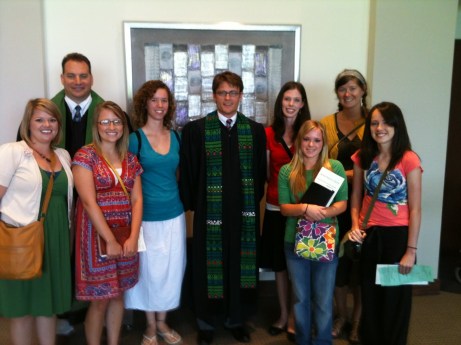
at Second Baptist, with Pastor Ryon and Pastor Ben.
Day Six: Egg breakfast, complements of the Food Bank. Love infused into the eggs, complements of Tish. Worship at Second Baptist – church of Vangela and David. Us gals split up into two groups to speak at the college and Boomers Sunday school classes. Then we worship with Harry Potter – actual name Ryon Price, a graduate of Duke Divinity School and new pastor at 2nd B. Sermon entitled “Like A Good Neighbor” – not referring to State Farm Insurance, but rather reflections on the story of the Good Samaritan. Pondering the question who is my neighbor, but on a deeper level, for the question asked to Jesus implies that certainly they are people who are not considered to be my neighbor. There are people that we need not be concerned for. There are people who are not considered to be my brother or my sister. But Jesus answers the tax collectors question with a parable-infused question – in typical Jesus-fashion. A good teaching as we take to the road again – and attempt to understand on this trip, deemed a mission trip, that ministry is not just confined to the few moments we haughtily choose to deem as missional.
End Day Five 1/2. End Part Two.

